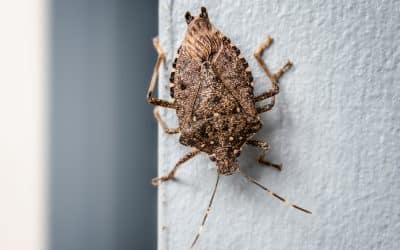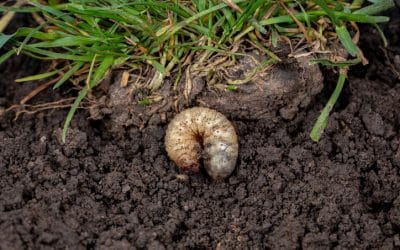
Pest Identification: Pest ID: Carpenter Bees
Nests start with a ½ inch entrance hole, leading to tunnels that can be 6 inches to 4 feet long. Carpenter bees reuse old nests, drilling new tunnels if needed. Mating occurs once a year, eggs are laid in July, and females may share nests. Carpenter bees don't have queens or workers; only females build nests. Damage is minimal, but infestation can weaken old structures.
Signs of carpenter bees include holes in wood, sawdust on the ground, bees flying into nests, and excrement near entrances. To keep them away, paint wood with polyurethane, use almond oil, plug entrances with wood dowels coated in glue, or use a citrus spray.
If you suspect a Carpenter Bee inspection, please give us a call for an inspection.

Buzzwords
Flea FAQs: What You Need to Know
We’ve all been there: that tiny black spec…did it just move? If you’re a homeowner, few things can spark panic faster than spotting a flea in your carpet, on your bedding, or crawling on your pet. Fleas are annoying, but they also bite, can spread disease, and turn...
Bug Off! Keeping Stink Bugs Out of Your Home
Fall in New England brings crisp air, colorful leaves, and stink bugs. As soon as the temperatures start to dip, stink bugs start searching for a cozy spot to ride out the winter, and your home is often their top choice. Unless you know how to stop them. With a few...
Protect Your Lawn: What You Need to Know About Grubs
You work hard to maintain a beautiful yard. But if you start noticing unexplained patches or spongy turf, grubs might be the culprit. These pesky beetle larvae feed on grass roots, turning lush lawns into a patchy mess. Bottom line: they are a threat to your yard....


